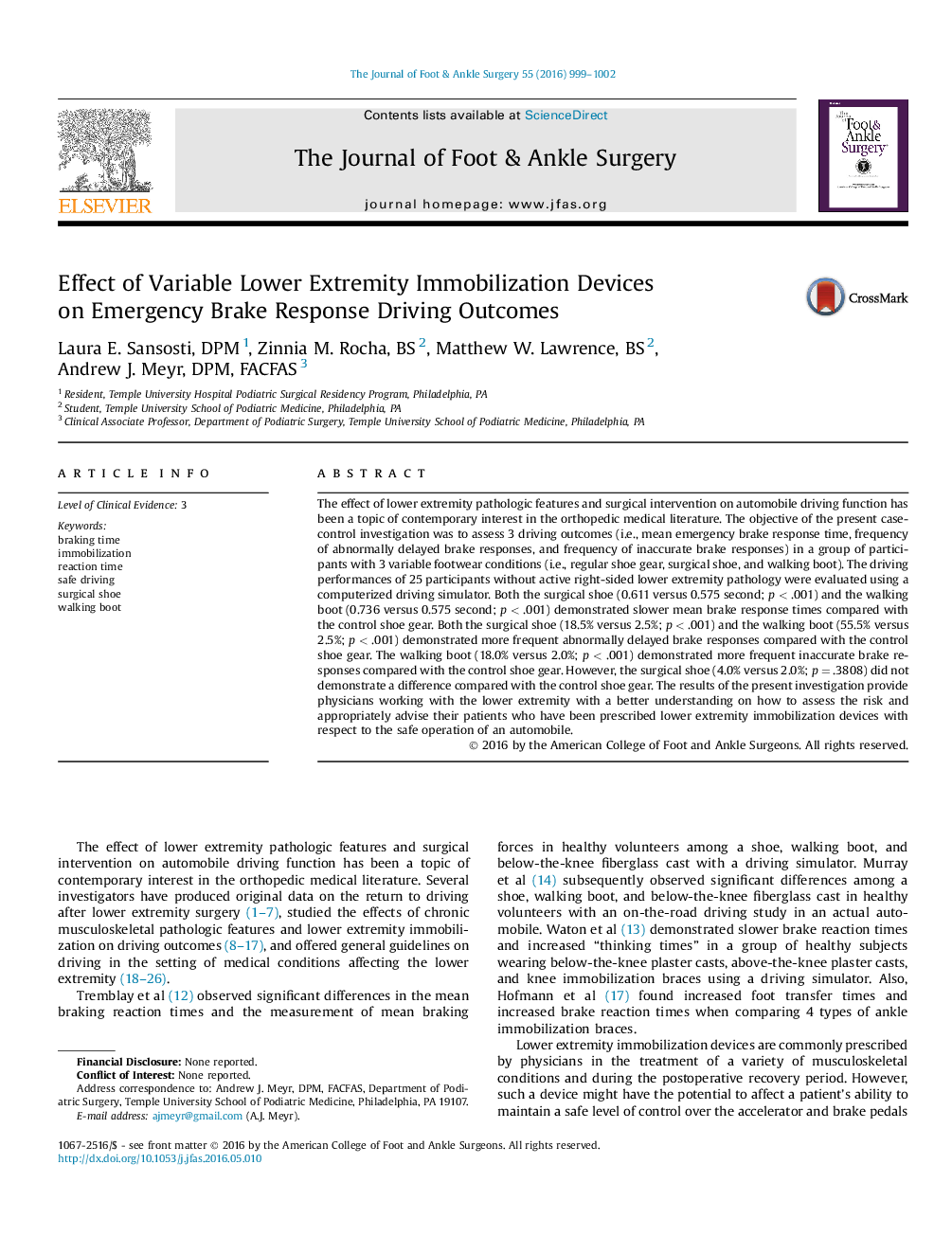| Article ID | Journal | Published Year | Pages | File Type |
|---|---|---|---|---|
| 2712740 | The Journal of Foot and Ankle Surgery | 2016 | 4 Pages |
The effect of lower extremity pathologic features and surgical intervention on automobile driving function has been a topic of contemporary interest in the orthopedic medical literature. The objective of the present case-control investigation was to assess 3 driving outcomes (i.e., mean emergency brake response time, frequency of abnormally delayed brake responses, and frequency of inaccurate brake responses) in a group of participants with 3 variable footwear conditions (i.e., regular shoe gear, surgical shoe, and walking boot). The driving performances of 25 participants without active right-sided lower extremity pathology were evaluated using a computerized driving simulator. Both the surgical shoe (0.611 versus 0.575 second; p < .001) and the walking boot (0.736 versus 0.575 second; p < .001) demonstrated slower mean brake response times compared with the control shoe gear. Both the surgical shoe (18.5% versus 2.5%; p < .001) and the walking boot (55.5% versus 2.5%; p < .001) demonstrated more frequent abnormally delayed brake responses compared with the control shoe gear. The walking boot (18.0% versus 2.0%; p < .001) demonstrated more frequent inaccurate brake responses compared with the control shoe gear. However, the surgical shoe (4.0% versus 2.0%; p = .3808) did not demonstrate a difference compared with the control shoe gear. The results of the present investigation provide physicians working with the lower extremity with a better understanding on how to assess the risk and appropriately advise their patients who have been prescribed lower extremity immobilization devices with respect to the safe operation of an automobile.
